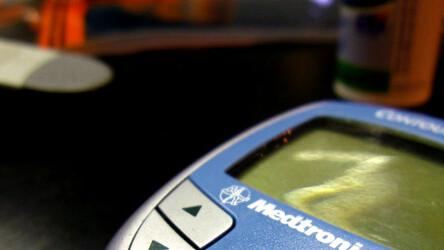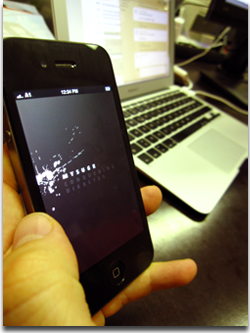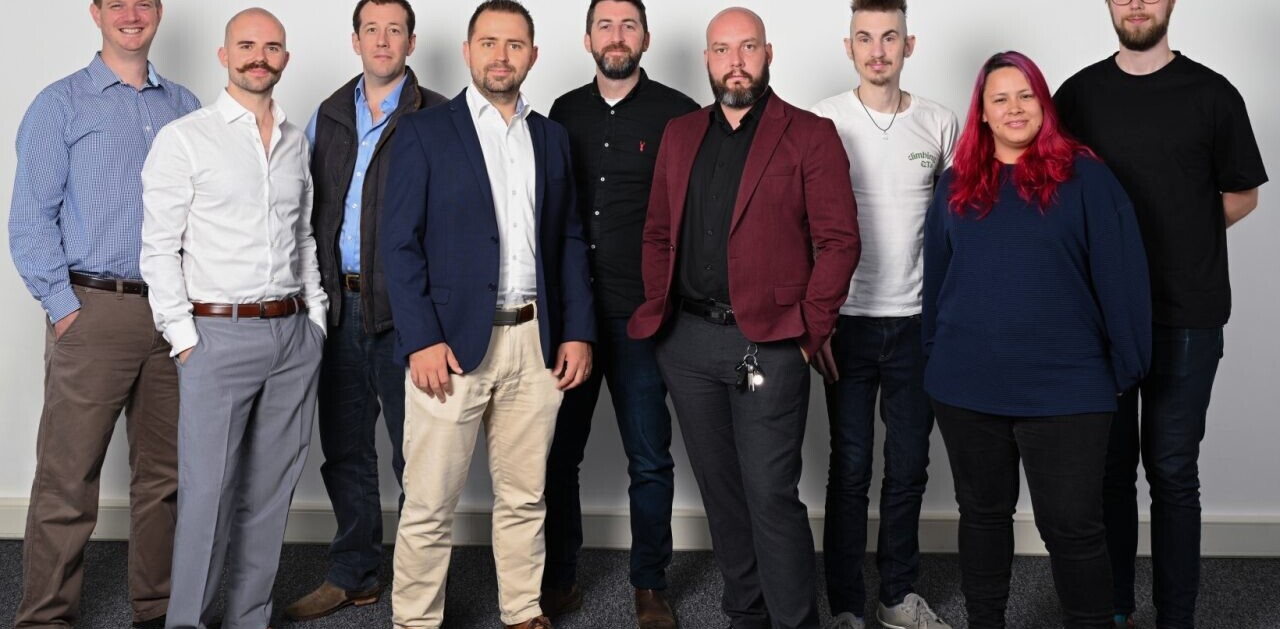
For those that live with Diabetes, and are treated with insulin, it’s a constant battle of checking, adjusting, rechecking, readjusting, repeat–a constant battle between one’s own mind, and one’s own “broken” pancreas.
According to the World Health Organization (WHO), there are currently more than 346 million individuals worldwide that live with diabetes, or 5.1% of the global population. Symptoms of diabetes include polyuria (frquent urination), polydipsia (elevated thirst), and polyphagia (increased hunger). When left unchecked, a diabetic could suffer from hypoglycemia (low blood glucose), diabetic keotoacidosis (extremely high blood glucose, due to lack of insulin), and Nonketotic hyperosmolar coma. With the variety of complications that can arise from these symptoms (and many others), the WHO predicts that diabetes will become the 7th leading cause of death by 2030.
Fresh off their win at the Startup Week Challenge in Vienna, Austria, Fredrik Debong, Frank Westermann, Michael Forisch, and Gerald Stangl of mySugr are seeking to turn these seemingly depressing stats into a Barney Stinson style, “Challenge accepted.”
As a non-diabetic, I’ll admit that my knowledge of the condition was only scratching the surface, but after sitting down with Debong this week, I gained a much deeper insight as to what goes through the mind of a diabetic on a daily basis, and how mySugr’s upcoming app seeks to address and modify the behavior of diabetics around the globe.
 Diabetics, whether they like it or not, are by default statisticians. Fredrik provided a great example of his daily dietary considerations, running down the list of what he ate for lunch that day, and then illustrating the data that he calculates in his head to provide his body with the proper amount of hormones to balance out what his pancreas would naturally be doing, but isn’t.
Diabetics, whether they like it or not, are by default statisticians. Fredrik provided a great example of his daily dietary considerations, running down the list of what he ate for lunch that day, and then illustrating the data that he calculates in his head to provide his body with the proper amount of hormones to balance out what his pancreas would naturally be doing, but isn’t.
“Everything you eat, you have to estimate. For three exchanges, the unit we often use to simplify how we estimate food, at this time of the day, I should inject this and that to counteract that…Managing diabetes is like a little bastard sitting on your shoulder all the time, and it’s a grind.”
Adding to the complexity that diabetics deal with, Debong explains that the day of our interview he’d injected 3.6 units to balance out his meal, but a year from now that balancing act will take on different numbers.
“The organism doesn’t stay put, it’s a dynamic system. Everything changes. You also change with your context.”
To put this statement to the test, Debong, a 27-year veteran of living with diabetes, embarked on a skydiving expedition whereby he tracked his various body chemicals noting specific data points where fear and adrenaline shot his glucose levels off the charts. What he found was that without injecting any insulin, about 3 hours after the event his glucose levels had returned to normal, indicating that surroundings and context play a powerful role in regulating one’s own internal chemistry.
It wasn’t until Debong met Stangl at a hackathon event at one of Vienna’s tech hubs, Metalab, until the idea of mySugr began to take form. Frank Westermann, also a diabetic, and Gerald Stangl were looking into solving diabetic related problems stemming from Westermann’s relentless travel schedule criss-crossing Europe on a regular basis. Fredrik tells me that his initial reaction to their proposed idea was nothing short of a flat out, “No, no, no!”
“Do you have a standard ISO 13485 for production of medical devices? Be careful!”
After an escalated series of conversations, Westermann and Stangl won Debong over, and mySugr was born.
Fast forward 10 months, and mySugr has already secured a med-tech partner in Abbott Laboratories in Austria, with whom they’ll be doing a joint release of the product. When asked if other med-tech firms have been in contact, Debong commented only that there are “others” that have expressed interest in the product, but declined to name them specifically.
“We aim to have the maximum impact in diabetics lives. What we intend to do is be a neutral player. As a med-tech company, you can work with us and use us as your mobile platform for your diabetics.”
 Having been jolted out of stealth mode by winning Vienna’s Startup Week Challenge, the mySugr team was still a bit hesitant about revealing any particular details about how the app looks and functions, but they did provide a few key notes. For now, mySugr is focused on web only and smartphone versions, specifically the iPhone.
Having been jolted out of stealth mode by winning Vienna’s Startup Week Challenge, the mySugr team was still a bit hesitant about revealing any particular details about how the app looks and functions, but they did provide a few key notes. For now, mySugr is focused on web only and smartphone versions, specifically the iPhone.
And although mySugr isn’t alone in the diabetes data logging arena, others include Glucose Buddy, Track 3 and Wavesense, Debong believes that the mySugr team has streamlined the process and provided value through making the data meaningful more than 3 days later, building upon Debong’s previous data experiments with situational context. mySugr focuses on the key metrics that are important to every diabetic:
- Blood glucose
- Carbohydrates that are eaten
- Movement and physical activity
- How much insulin is injected
Through simplifying how diabetics log their activity, combined with situational context, mySugr provides users with a better analysis of their current lifestyle, highlighting weak points they need to work on, all the while incorporating game mechanics that team members have drawn parallels to in their day-to-day diabetes therapy.
“Instead of acting on long term goals, we break it down to something that takes you a minute. Instead of not feeling any progress, we not only make progress felt, but make you smile. Let’s use humor in a medical application and see where that takes you. It’s not just about the mechanics, it’s about the experience you have, where when you enter your medical login app, you have a smile on your face.”
Building upon the game elements present in mySugr, Fredrik points to Nicholas Christakis’ TED talk where he covers the prediction of epidemics through social networking. Further building upon the situational context, mySugr is incorporating principles from this talk (and others) and building support, and a better life, for diabetics through social support, all within the app.
“There are 355 million diabetics in this world, and we don’t see each other. Until it’s too late. So how about we not only turn this on it’s head by making you smile, telling you jokes, and helping you take those steps which are required to optimize your daily therapy, but also connect you with other diabetics?”
Still in a very close and private alpha, the mySugr team is currently interacting on a one-to-one basis with testers in Vienna, further fine tuning the app from their co-working space at Sektor 5. Although they’d hoped for a release before the end of the year, a Q1 2012 launch is now projected.
Get the TNW newsletter
Get the most important tech news in your inbox each week.





